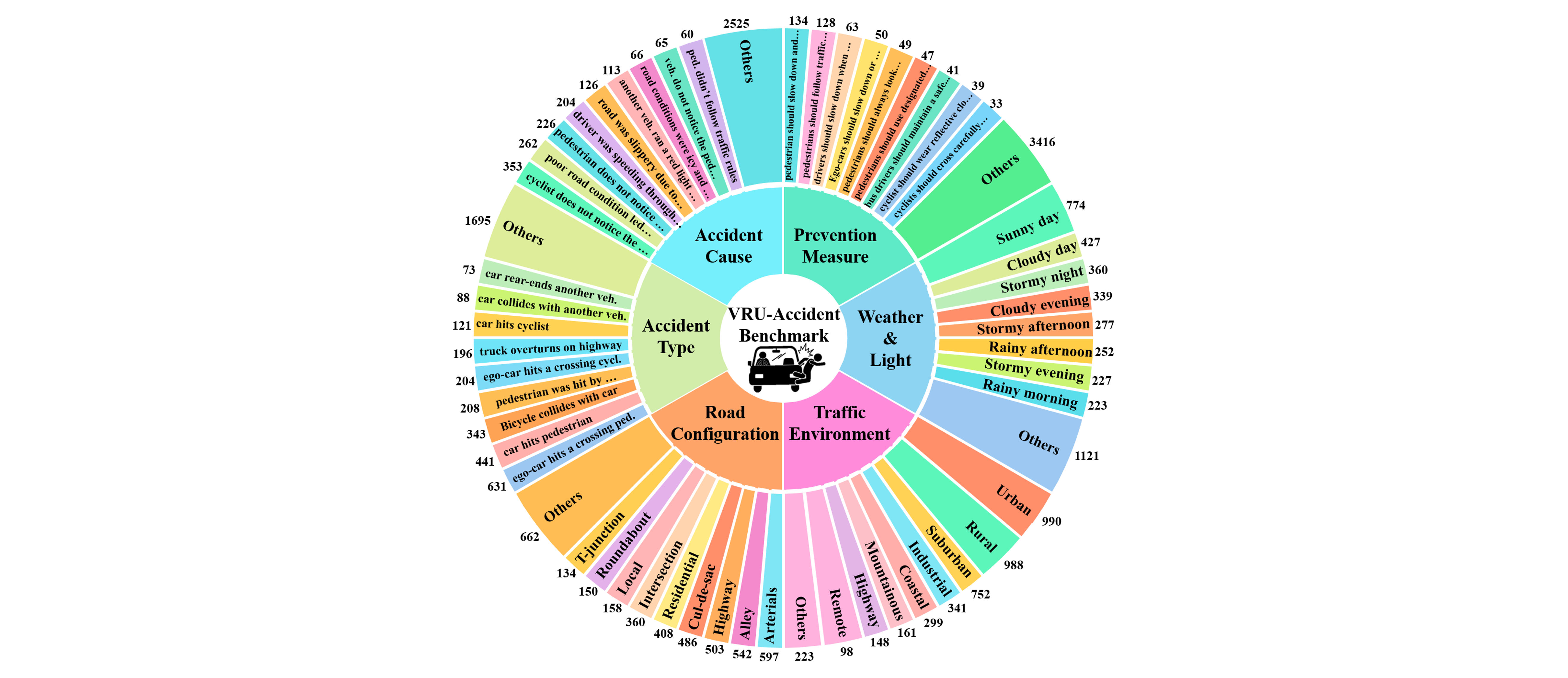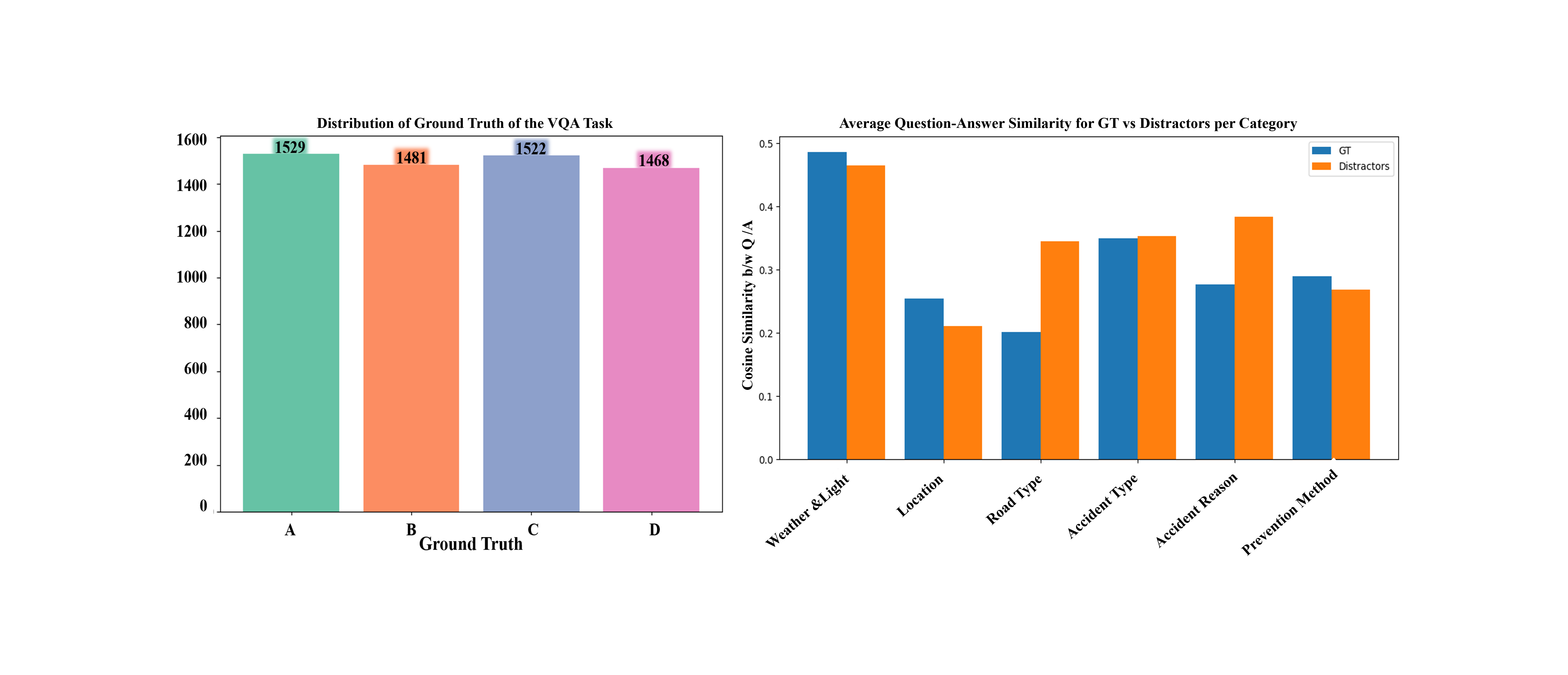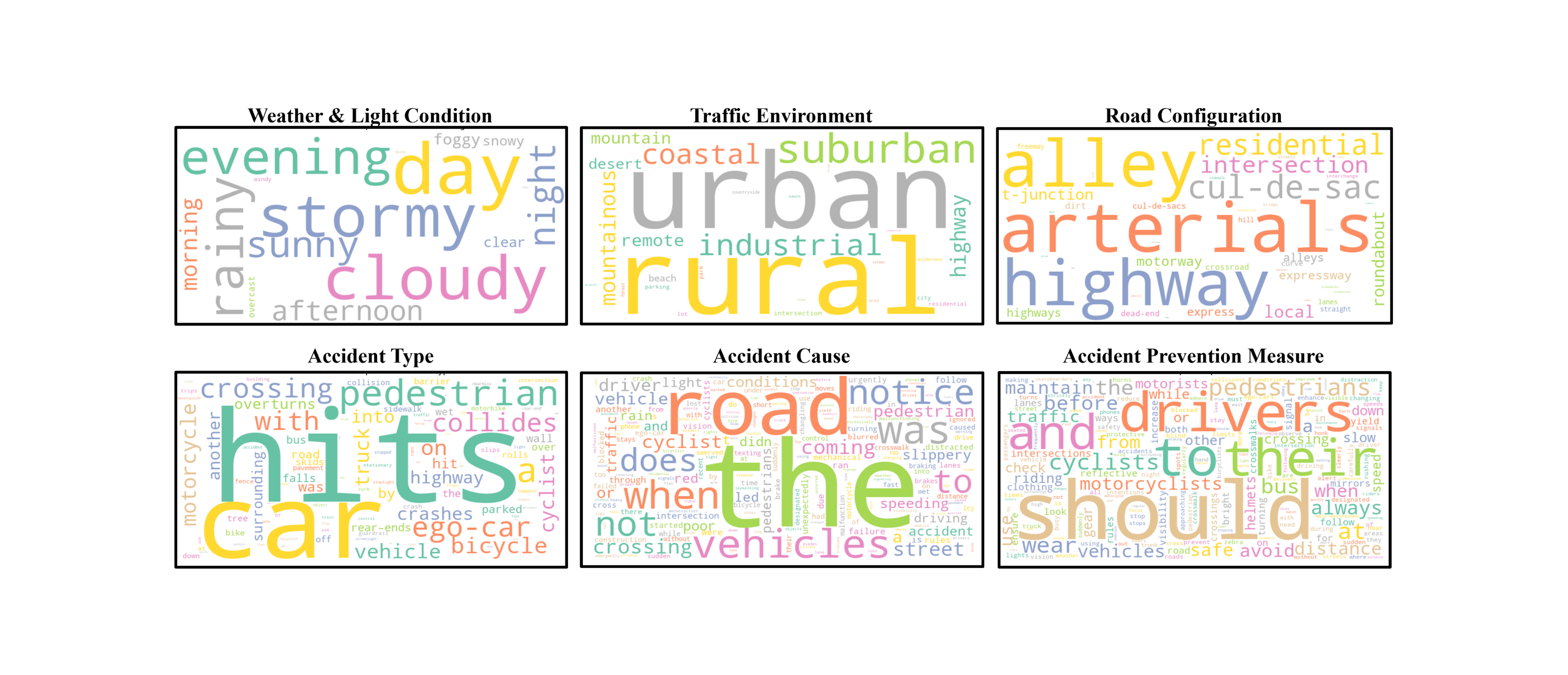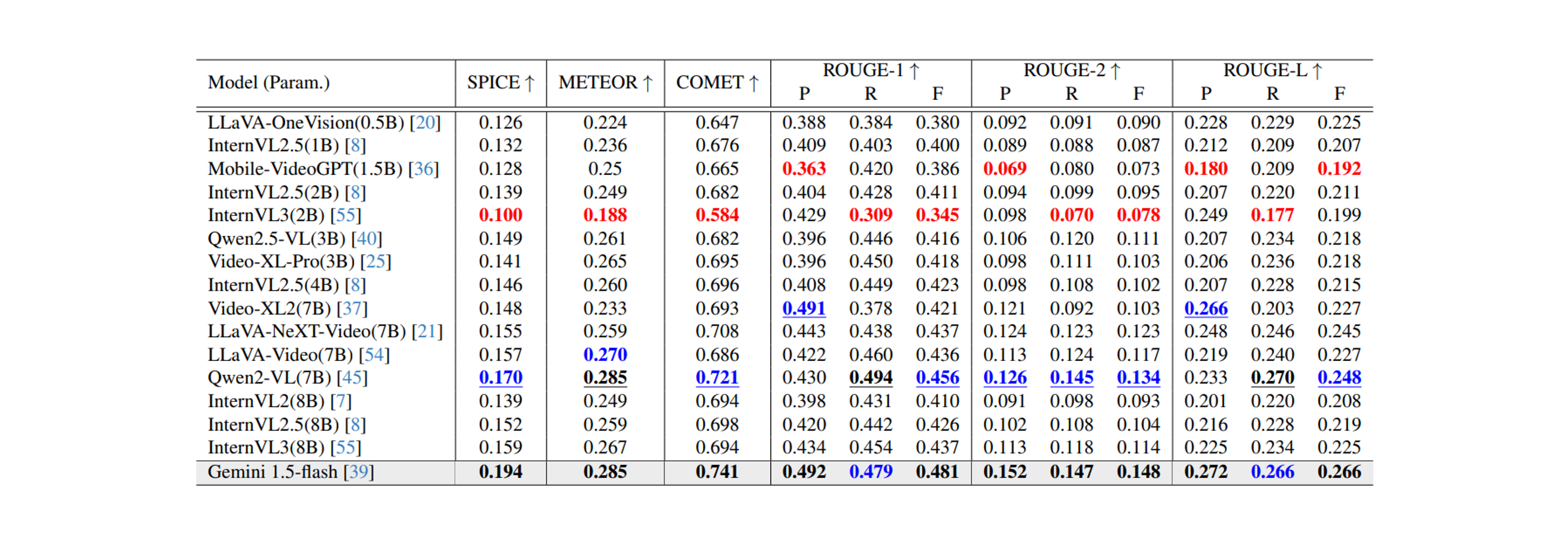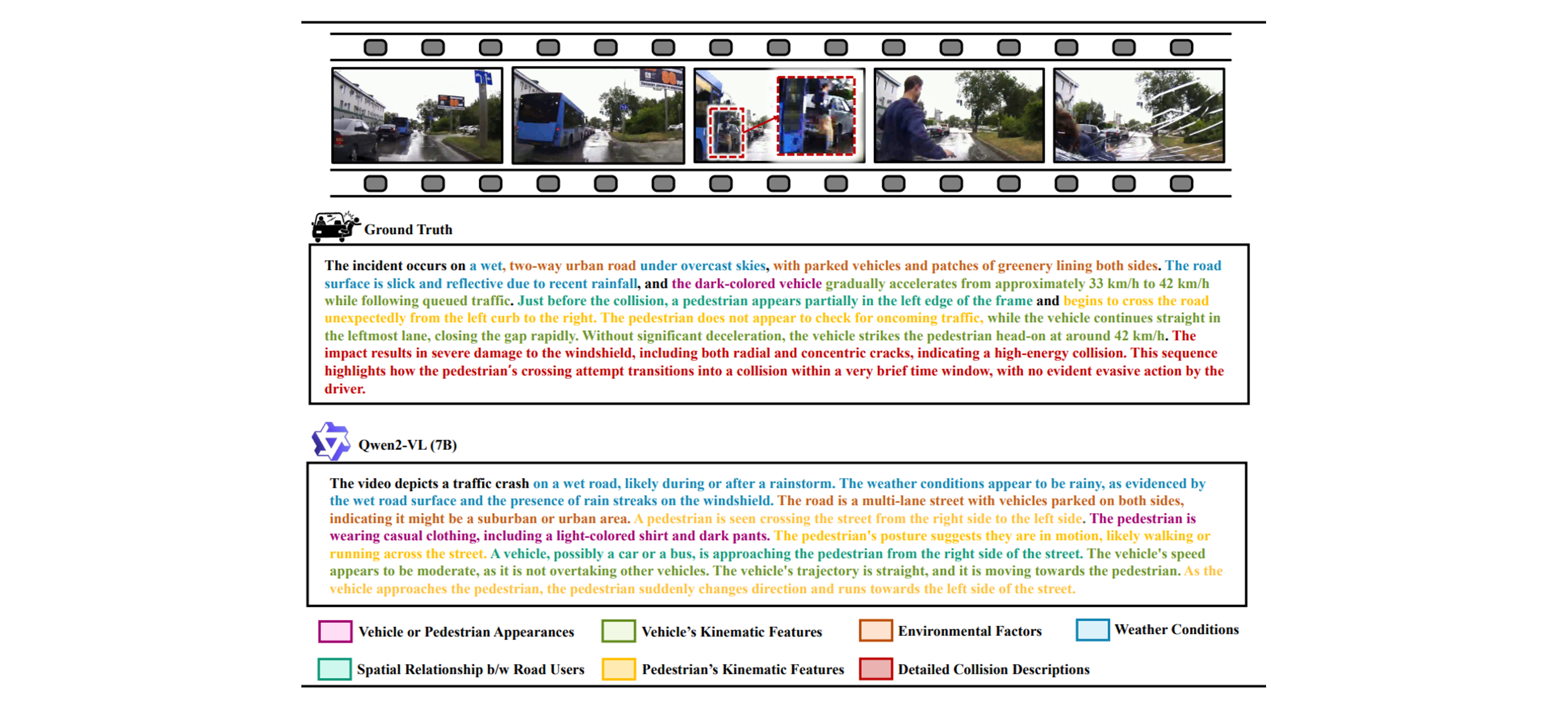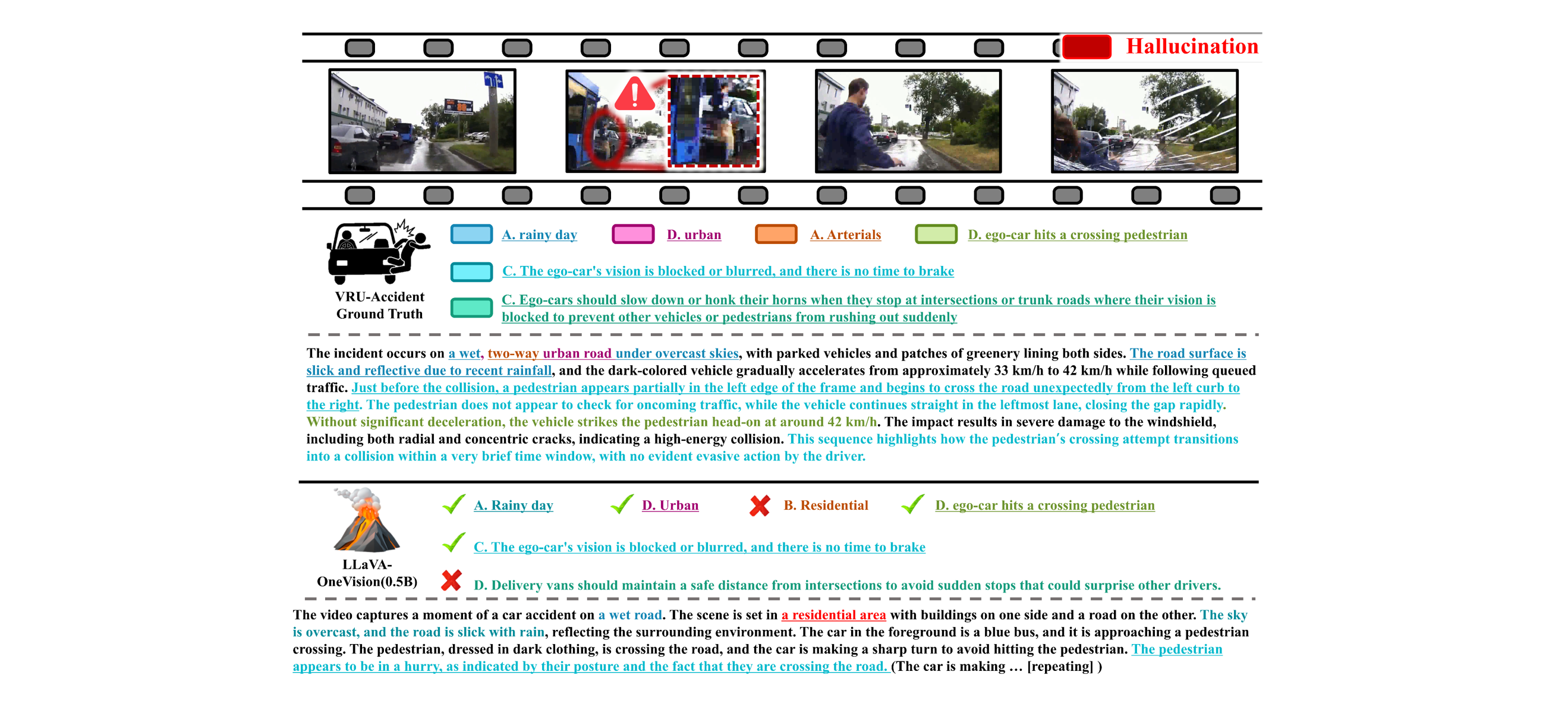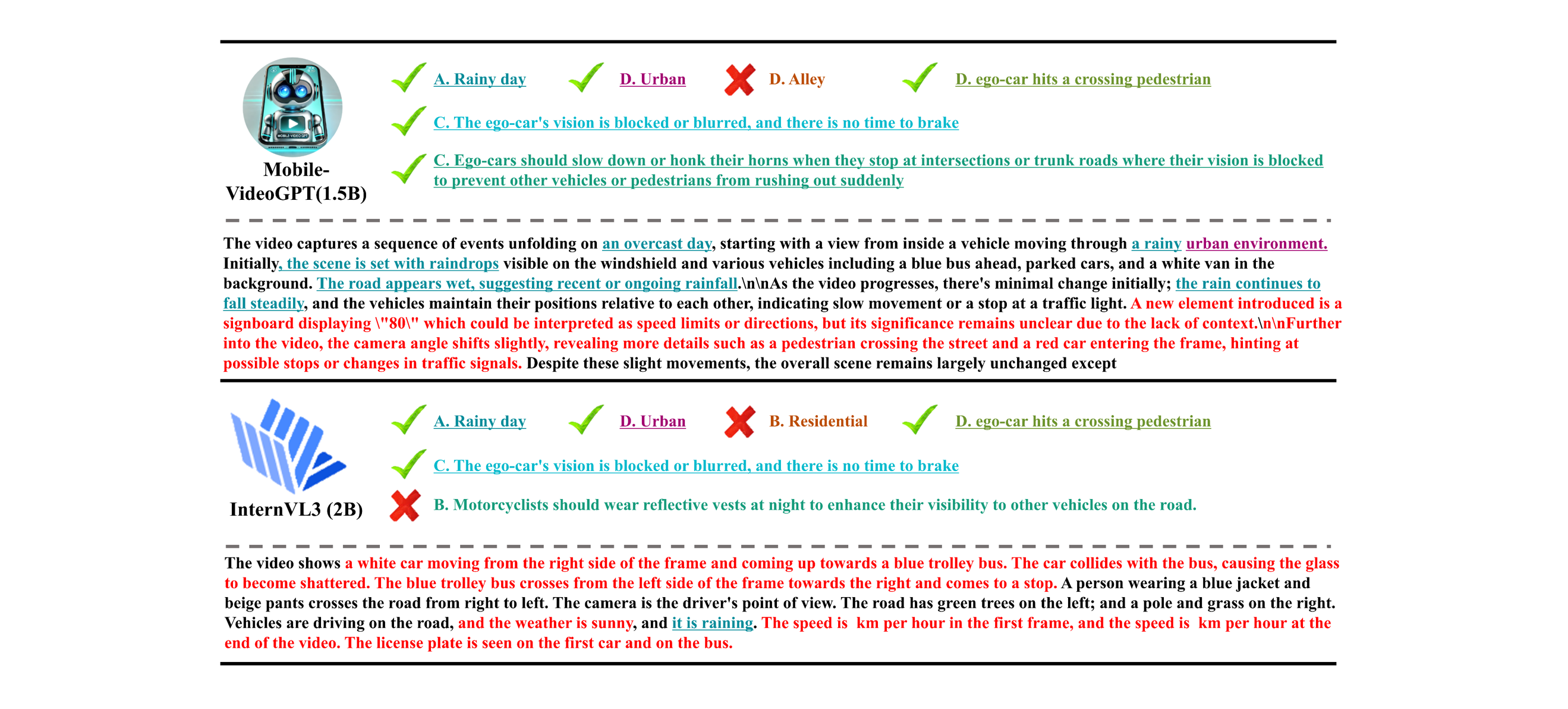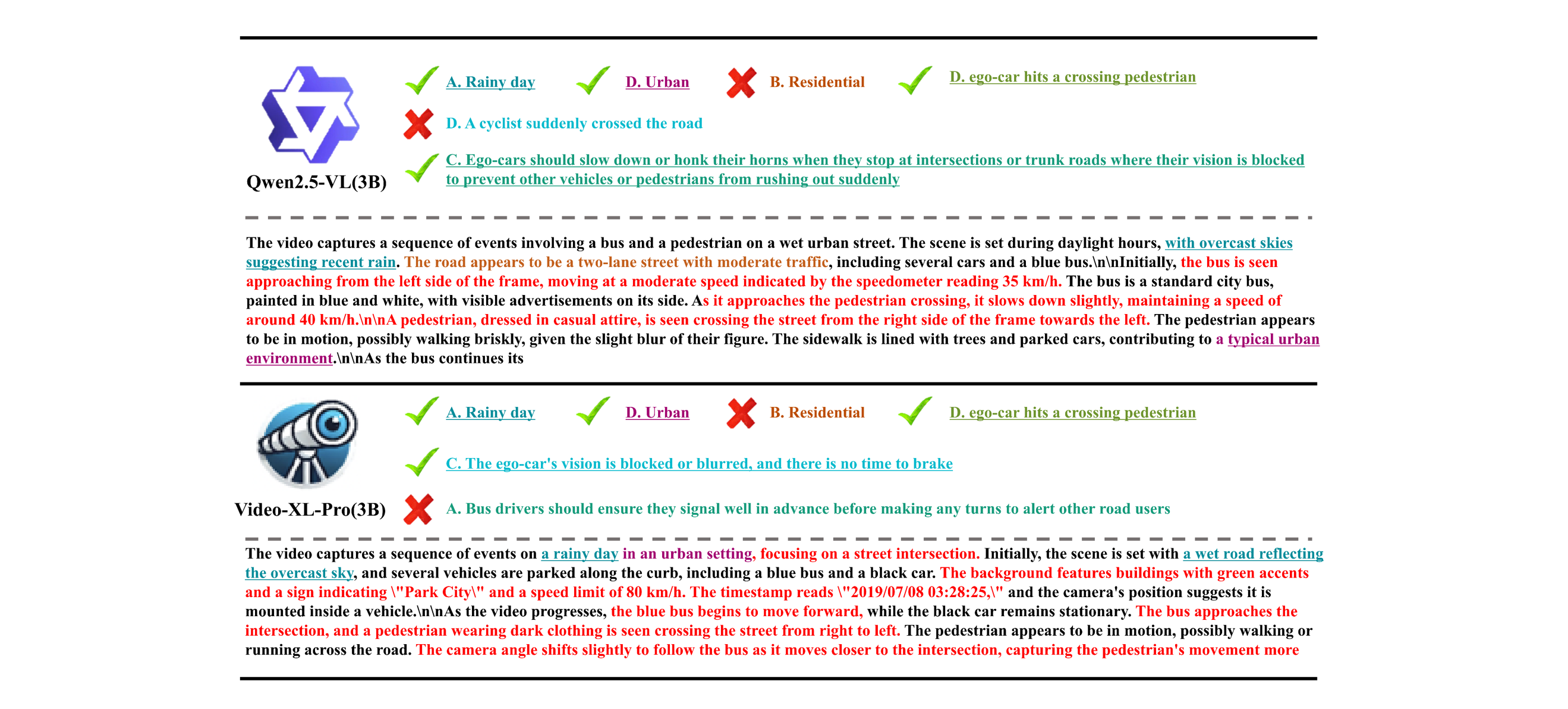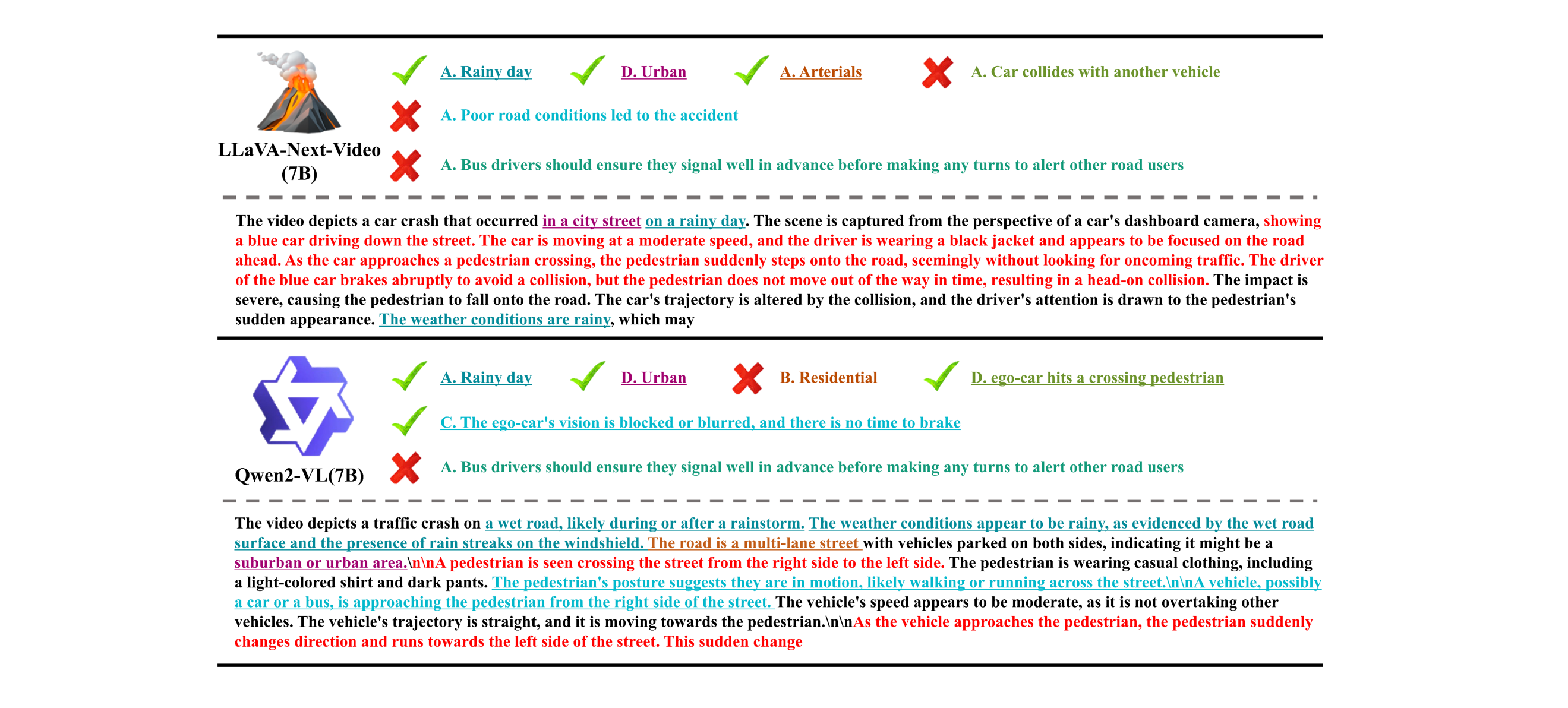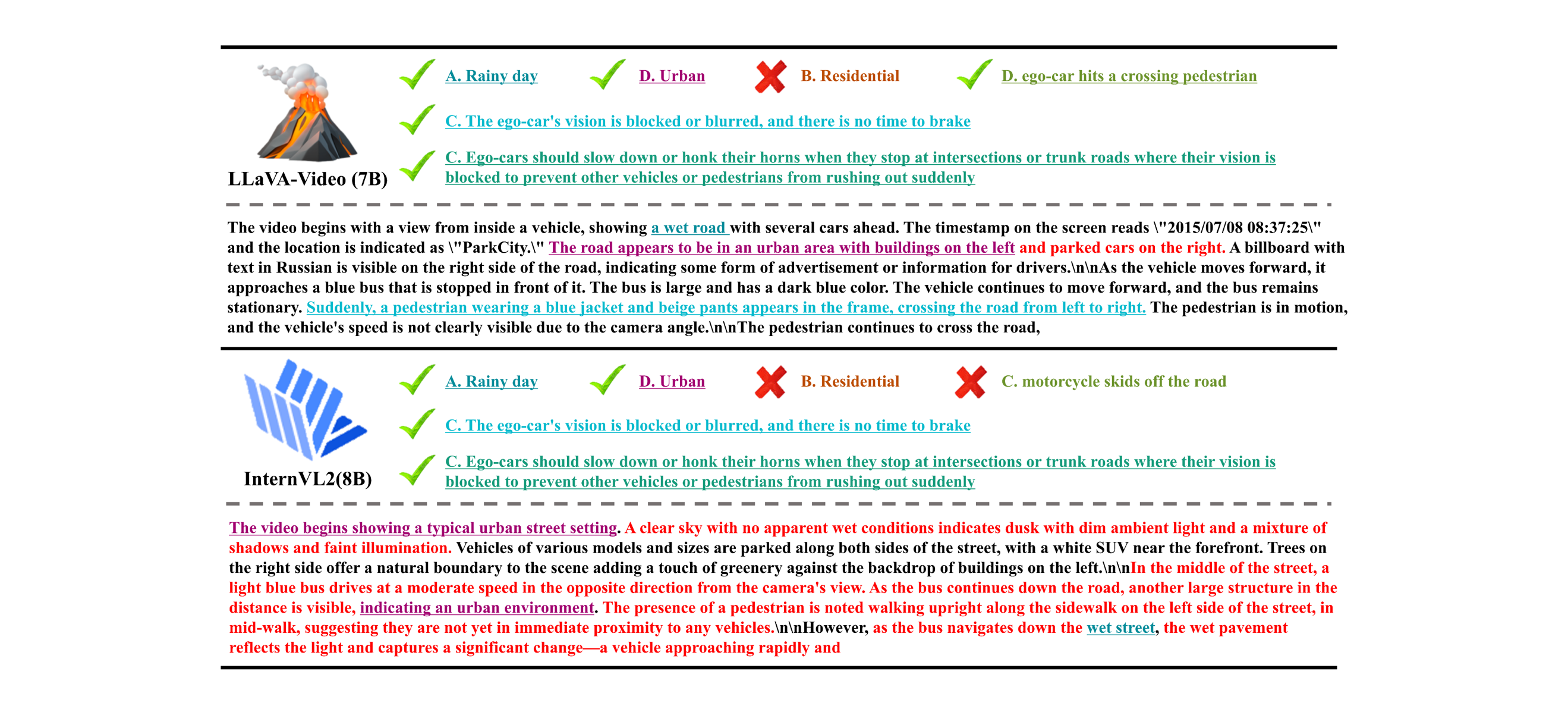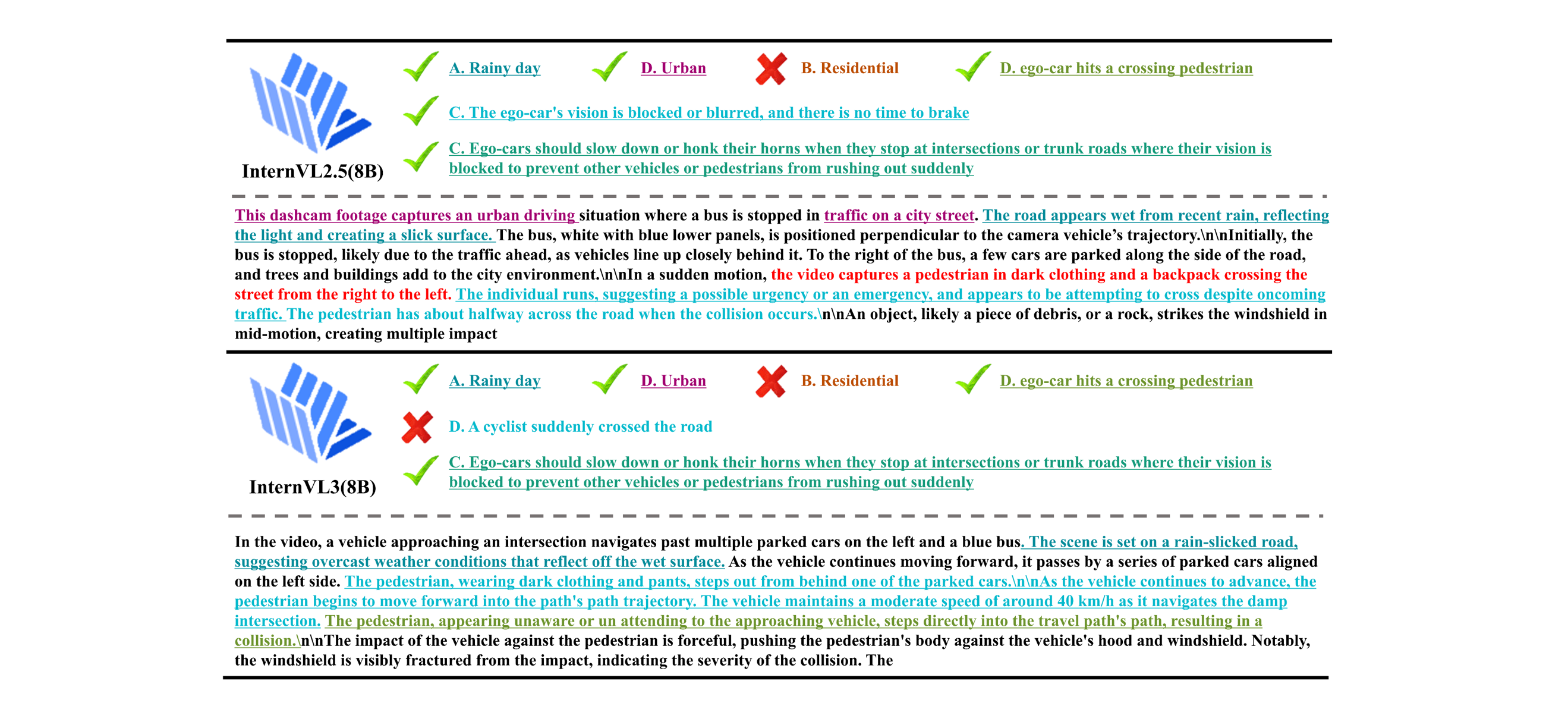Citation
@InProceedings{Kim_2025_ICCV,
author = {Kim, Younggun and Abdelrahman, Ahmed S. and Abdel-Aty, Mohamed},
title = {VRU-Accident: A Vision-Language Benchmark for Video Question Answering and Dense Captioning for Accident Scene Understanding},
booktitle = {Proceedings of the IEEE/CVF International Conference on Computer Vision (ICCV) Workshops},
month = {October},
year = {2025},
pages = {761-771}
}
@misc{kim2025vruaccidentvisionlanguagebenchmarkvideo,
title={VRU-Accident: A Vision-Language Benchmark for Video Question Answering and Dense Captioning for Accident Scene Understanding},
author={Younggun Kim and Ahmed S. Abdelrahman and Mohamed Abdel-Aty},
year={2025},
eprint={2507.09815},
archivePrefix={arXiv},
primaryClass={cs.CV},
url={https://arxiv.org/abs/2507.09815},
}
